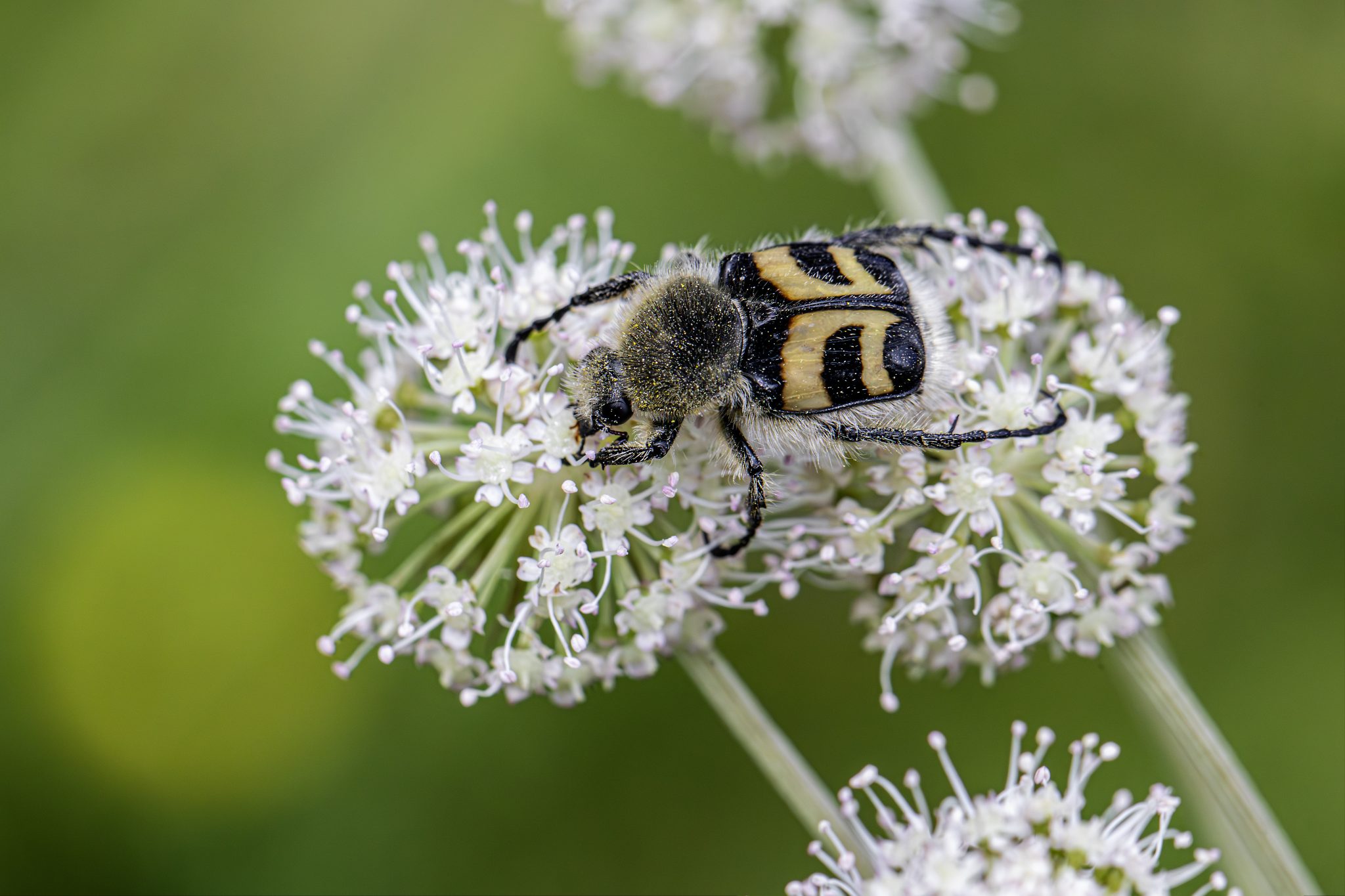ThEurasian Bee Beetle (Trichius fasciatus)
Family: Scarabaeidae
Subfamily: Cetoniinae (Flower chafers)
Common names: Bee beetle, Eurasian bee beetle, Bumblebee mimic beetle
🐞 Identification
- Size: 8–14 mm long
- Shape: Oval, compact body with dense yellowish or orange hair, giving it a bee-like appearance
- Coloration:
- Elytra (wing covers): Yellow or pale with three black transverse bands — resembling a bumblebee’s pattern
- Thorax and head: Black, often with dense yellowish hairs
- Legs: Black and robust
This is a classic example of Batesian mimicry—a harmless beetle mimicking a stinging insect to avoid predators.
🌸 Habitat
- Flower-rich meadows, woodland edges, clearings, and alpine pastures
- Especially common in mountainous and hilly regions up to 2000 m elevation
- Often seen resting or feeding on flowers, especially thistles, roses, hawthorns, and umbellifers
🌼 Diet
- Adults:
- Feed on pollen and nectar
- Often found on open, composite flowers in full sun
- Larvae:
- Develop in rotting wood (especially deciduous trees like beech and birch)
- Feed on decayed wood and organic matter
🔁 Life Cycle
- Eggs laid in decaying wood or tree stumps
- Larvae: White, C-shaped grubs that live in rotting wood for 1–2 years
- Pupation: In the wood
- Adults: Emerge in late spring to mid-summer (typically May to July)
🌍 Distribution
- Found throughout central and northern Europe, including:
- Scandinavia
- The Baltic region
- Central Europe (Germany, Poland, Czechia, etc.)
- Alpine regions
- Prefers cooler climates and flower-rich forested areas
🧬 Ecological Role
- Pollinator: While visiting flowers, adults help with pollination
- Decomposer: Larvae aid in wood decay, contributing to forest nutrient cycling
🛡️ Conservation Status
- Not globally threatened, but reliant on:
- Old-growth woodland with decaying wood
- Wildflower diversity for adult foraging
Loss of these habitats through modern forestry or meadow degradation can affect local populations.
✅ Fun Facts
- Its fuzzy body and banded elytra cause it to be mistaken for a bumblebee at a glance.
- Males can be identified by the larger, brushy front legs used during mating.
The Eurasian Bee Beetle (Trichius fasciatus) is not just a visual delight but also a valuable pollinator and decomposer, thriving at the intersection of flower-filled meadows and mature woodlands.
Visited 44 times, 2 visit(s) today
Views: 2615
Subscribe to the newsletter:
